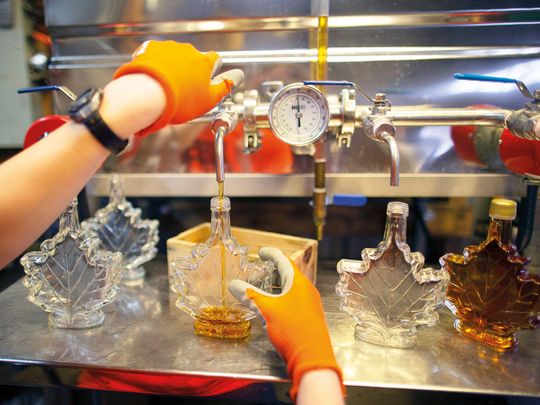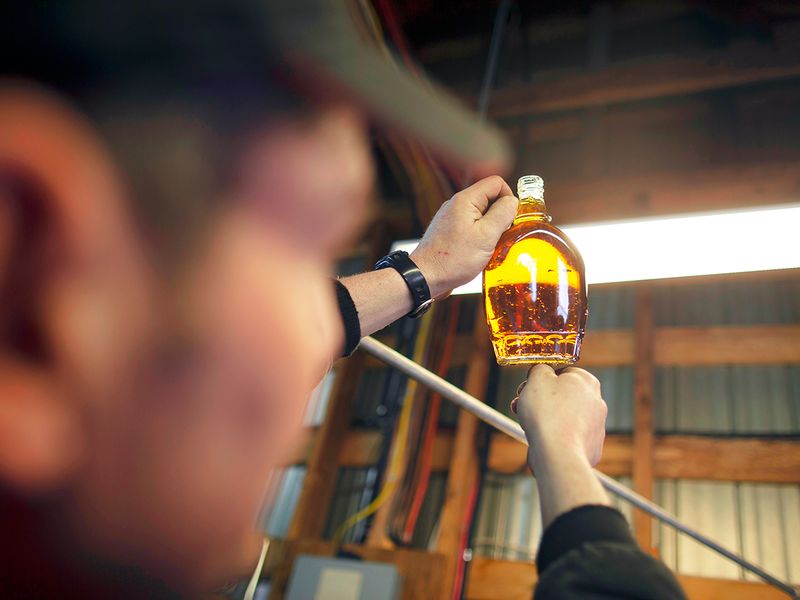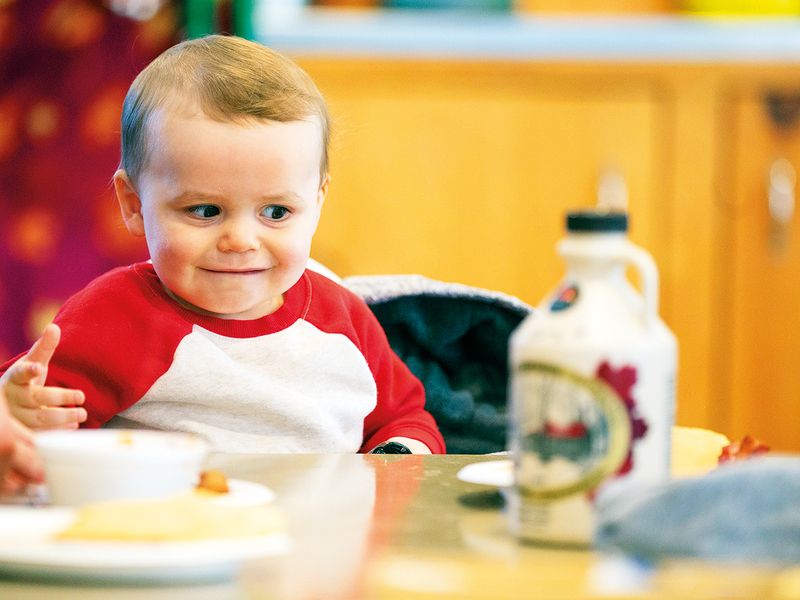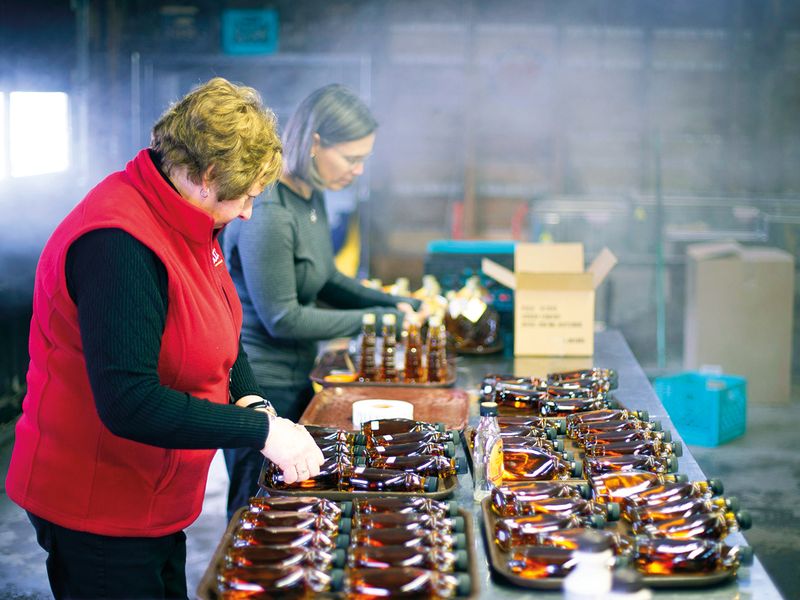
PAKENHAM, Ontario: By 9.30am the line for Fulton’s Pancake House and Sugar Bush had snaked out the door and down the driveway towards the parking lot, like a line on the day a new iPhone goes on sale.
But the restaurant, roughly 65km southwest of Ottawa, isn’t new. It’s in its 50th year, and its star attraction, maple syrup, is much older. It was invented by indigenous people long before Europeans arrived in the Americas.
“Maple is a social crop,” said Shirley Fulton-Deugo, the owner. “It’s the first crop of the year and a sign that spring is here.”
70 %
of the world’s maple syrup comes from CanadaFulton’s sits on 400 wooded acres in Eastern Ontario, and Fulton-Deugo is a fourth-generation maple syrup producer. Her children help her run the business, and three of her grandchildren are already making their own syrup and selling it under the label Triple Trouble.
But should the Triple Trouble generation have grandchildren one day, it’s not clear they’ll be able to take over the family business. A growing body of research suggests that warming temperatures and a loss of snowpack linked to climate change may significantly shrink the range where it’s possible to make maple syrup.

In fact, climate change is already making things more volatile for syrup producers. In 2012, maple production fell by 54 per cent in Ontario and by 12.5 per cent in Canada overall, according to data from the Canadian government, because of an unusually warm spring.
Canada produces roughly 70 per cent of the world’s maple syrup. That was worth about $370 million (Dh1.36 billion) in 2017.
Tapping the sap
Warm weather can hurt syrup production because the process depends on specific temperature conditions: daytime highs above freezing with night-time lows below freezing. This specific variation — which tends to happen as winter turns to spring, and fall into winter — causes pressure differences in the trees that allow the sap to flow. And it’s the sap that the farmers boil to create syrup.
$ 370 m
is how much all the maple syrup produced in 2017 costTo release the sap, maple producers make a small hole in the tree and insert a tap that allows it to spill out. But there’s only a small window when conditions are right.
“You’re really only talking six to eight weeks,” said Mark Isselhardt, a sugar maple expert at the University of Vermont. “Every day that you don’t get sap flow has the potential to really impact the total yield for that operation.”
But because of climate change, some years those key temperatures are more elusive.
Instead of six or eight weeks to produce syrup in 2012, the Fultons had just 13 days. “We started the 8th of March and finished the 21st of March,” Fulton-Deugo said.

“That type of condition will happen more often, and it can have an impact like the impact it had in 2012,” said Daniel Houle, a biologist at the Quebec Ministry of Forests, Wildlife and Parks.
In addition to the shorter tapping window, spring is arriving earlier. The phenomenon is called season creep, and it means that fall ends later as well.
Timing is crucial
That creates more headaches for producers, and not only in Canada, because the timing of putting in taps is crucial. “I’m in my 60s,” said Helen Thomas, executive director of the New York Maple Producers Association and a syrup producer. “When I was a kid, my dad had the rule that you tapped around March 15th.” This year, they were tapping in late January.
54 %
decline in maple production in Ontario in 2012Maples need to be about 40 years old before they can be tapped, although they don’t come into their prime, according to Thomas, until they’re about 90 years old. “If I planted maple trees today, it would be my grandchildren that would be harvesting the sap from them,” she said.
But a recent study suggests that the changing climate is a threat to that process of growth and renewal. Andrew Reinmann, an ecologist at the City University of New York, along with colleagues at Boston University and the US. Department of Agriculture, looked at what happens to trees when snowpack declines.
Snowpack is important because, when temperatures dip, it acts as a blanket over the ground that prevents the soil, and the tree roots that reside in it, from freezing. By scraping off snow from some of the forest plots at the Hubbard Brook Experimental Forest in New Hampshire during the first four to six weeks of winter, Reinmann and his colleagues were able to mimic the delayed snowfall that is predicted by century’s end in the National Climate Assessment.

Low growth rates
“After the first year of snow removal, growth rates of the sugar maple trees declined by 40 per cent or so, and growth rates remained suppressed between 40 and 55 per cent below their growth rates before the start of the experiments,” Reinmann said.
Reinmann has also been running a separate experiment in which he heats the soils to see if the increase in warmer temperatures linked to an earlier spring would offset losses from frost damage. So far, his results suggest that it doesn’t.
12.5 %
decline in maple production in Canada overall in 2012Diane Kuehn, a professor at the State University of New York College of Environmental Science and Forestry, has researched the perceptions of climate change by maple syrup producers. “What I heard frequently from people was that they’re not concerned about themselves during their lifetime,” she said, “but they are concerned about future generations and their families.”
That appeared to be on the mind of Fulton-Deugo. “Most sugar makers are family farms, and those family farms hold this land and hold this space for the next generation,” she said.












